Exploring the unique high-rainfall, glacially sculpted forests of the southern Coast Mountains
Whistler, British Columbia is famed for its mountains, but just as magnificent are the ancient forests draped across their flanks—wet, wild, and woven with a diversity of conifers that whisper of deep time. Tucked in the southern Coast Mountains, the forests surrounding Whistler are shaped by a cool maritime climate, abundant precipitation, and a legacy of glaciation that has carved basins, ridges, and deep alluvial valleys. These physical forces, coupled with nutrient-rich colluvial and glacial soils, give rise to complex plant communities where conifers reign.
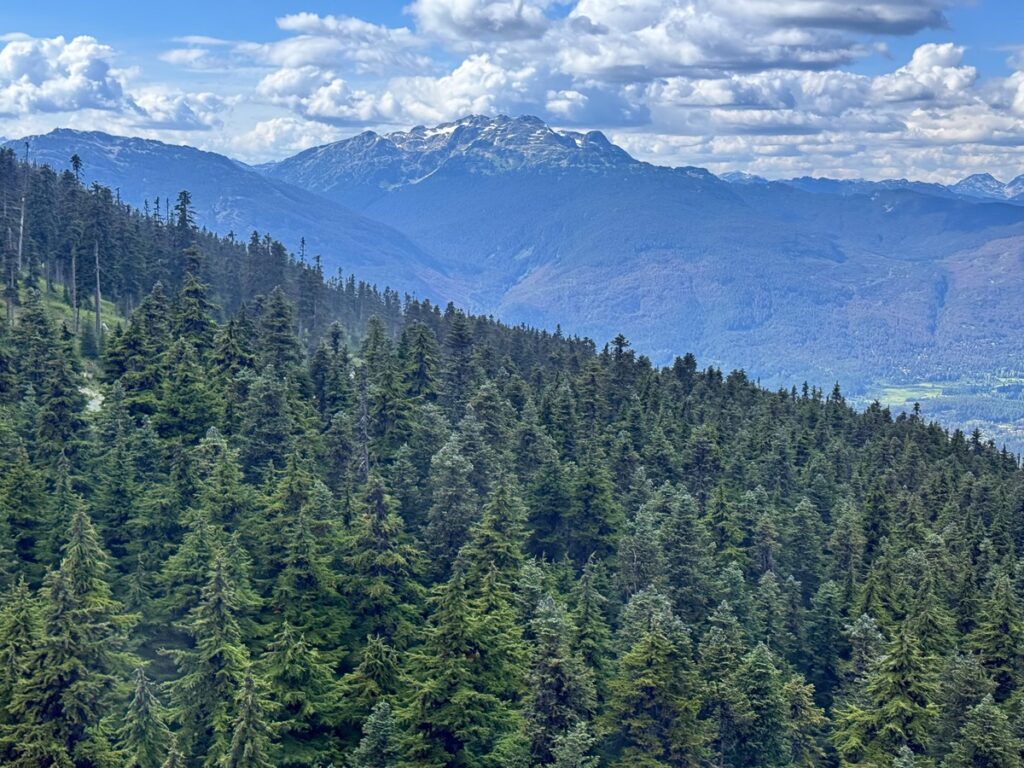
Climate and Geology
This region straddles a transitional zone between coastal and interior climates. Winters are snowy and long; summers are short and cool. Moisture-laden Pacific air drops heavy precipitation on west-facing slopes—rain in the valleys, snow at elevation—creating ideal conditions for shade-tolerant conifers and an understory thick with ericaceous plants like salal (Gaultheria shallon), mock azalea (Rhododendron menziesii), and white flowered rhododendron (Rhododendron albiflorum)–among many others.
Beneath the canopy, sphagnum moss, blueberries, and bog laurel hint at the region’s glacial past. This complex ecological mosaic nurtures diverse and beautifully layered forest types as elevation shifts.
Lowland Forests
In the valley bottoms and lower slopes, coniferous giants form towering cathedrals of green. Here, Pacific silver fir (Abies amabilis) rises straight and slender, preferring the deep, wet soils of cool forests. Western redcedar (Thuja plicata) spreads octopus-like roots across riparian flats, shedding its bark in long linear strips that dangle like forest tapestries–reaching tremendous size in the ancient cedars areas.
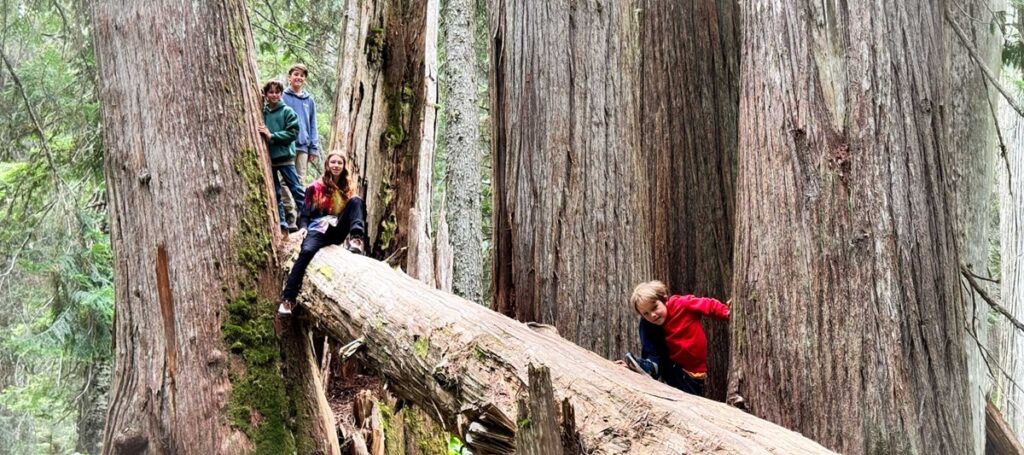
Western hemlock (Tsuga heterophylla) dominates the mid-canopy, often festooned with moss and lichen. Douglas-fir (Pseudotsuga menziesii) is less common in these wet zones but finds purchase on drier ridges and disturbed sites, its thick bark a relic of fire regimes more prevalent further south.
In wetter pockets, especially near streams and cold air drainages, Pacific yew (Taxus brevifolia) survives in the understory—an inconspicuous conifer, long-lived and shade-tolerant, with deep cultural and ecological value. And along transitional zones toward interior forests, Engelmann spruce (Picea engelmannii) may also occur, hinting at colder, subalpine influence.
Mid-Elevation Transitions
As one ascends the slopes, the forest composition subtly shifts. Western white pine (Pinus monticola) begins to appear, its tall, narrow silhouette and clustered needles adapting well to less saturated soils. Yellow-cedar (Callitropsis nootkatensis) joins the canopy, distinguished by its lacy foliage and exquisitely peeling bark. This species, so emblematic of coastal fog forests, often shares its domain with silver fir and hemlock in wet, snow-laden middle elevations.
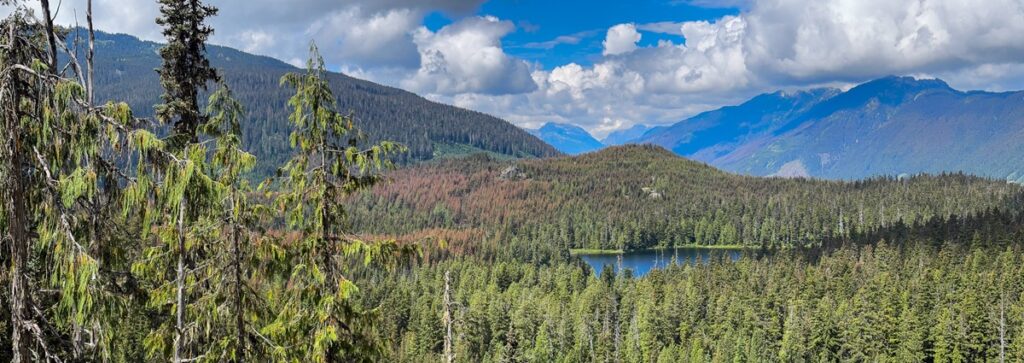
These mid-montane zones are some of the most biodiverse and structurally complex in the region—epiphytes, downed logs, and deep humus create a living sponge for water and nutrients.
Subalpine Forests
Above 1,500 meters, forests become stunted and spaced, shaped by heavy snowpack and short growing seasons. Subalpine fir (Abies lasiocarpa) takes root in windswept meadows-edge, its spire-like form adapted to snow creep and freezing temperatures. Mountain hemlock (Tsuga mertensiana), with its gracefully arching branches, thrives in deep snow and poor soils, often cloaked in lichens.

At the highest elevations, whitebark pine (Pinus albicaulis) stands as a sentinel of the tree line—resilient, wind-sculpted, and interdependent with Clark’s nutcracker for seed dispersal. These forests are sparse, but ecologically vital, offering food and shelter in otherwise harsh alpine zones.
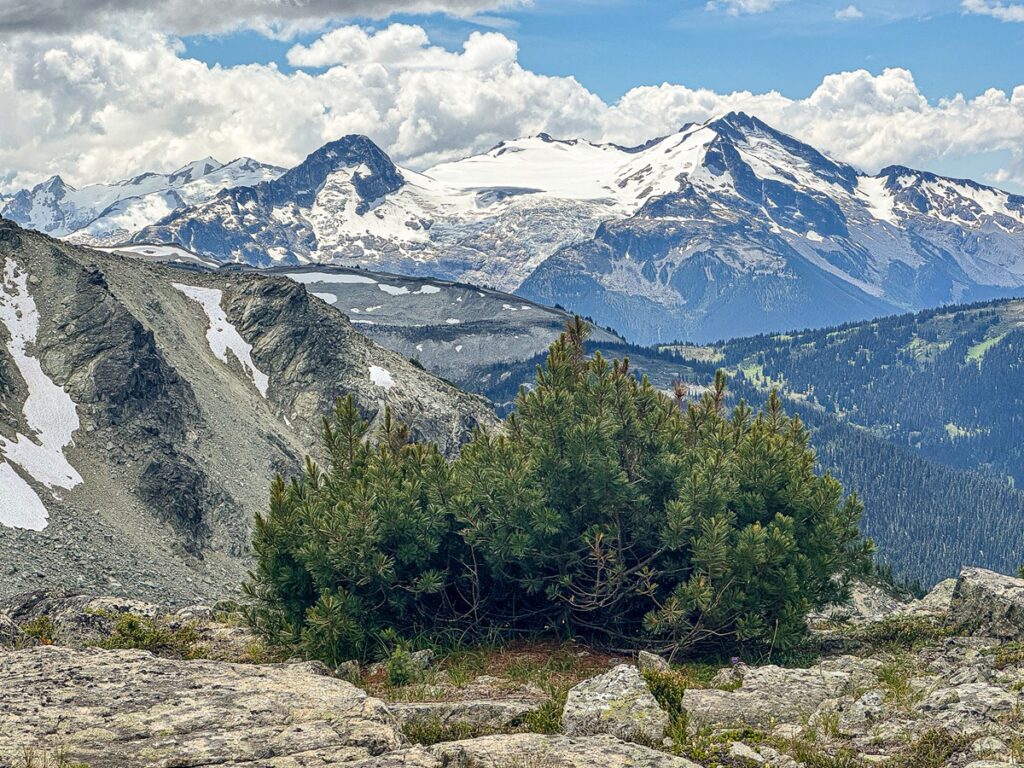
A Familiar Cast, a Unique Ensemble
All of these conifers are also found in California’s Klamath Mountains, my home ground. But here in Whistler, they assemble in different choruses, shaped by a colder, wetter climate and glacially influenced soils. The associations of Pacific silver fir with yellow-cedar, or the prominence of subalpine fir alongside whitebark pine, offer a different ecological rhythm than the one I know from the Klamaths.
These forests are a reminder that familiar species can compose new ecological stories when climate, geology, and time conspire. To walk through them is to read an alternate verse of the Pacific Northwest’s forested epic—still rich, still resonant, but tuned to a northern key.
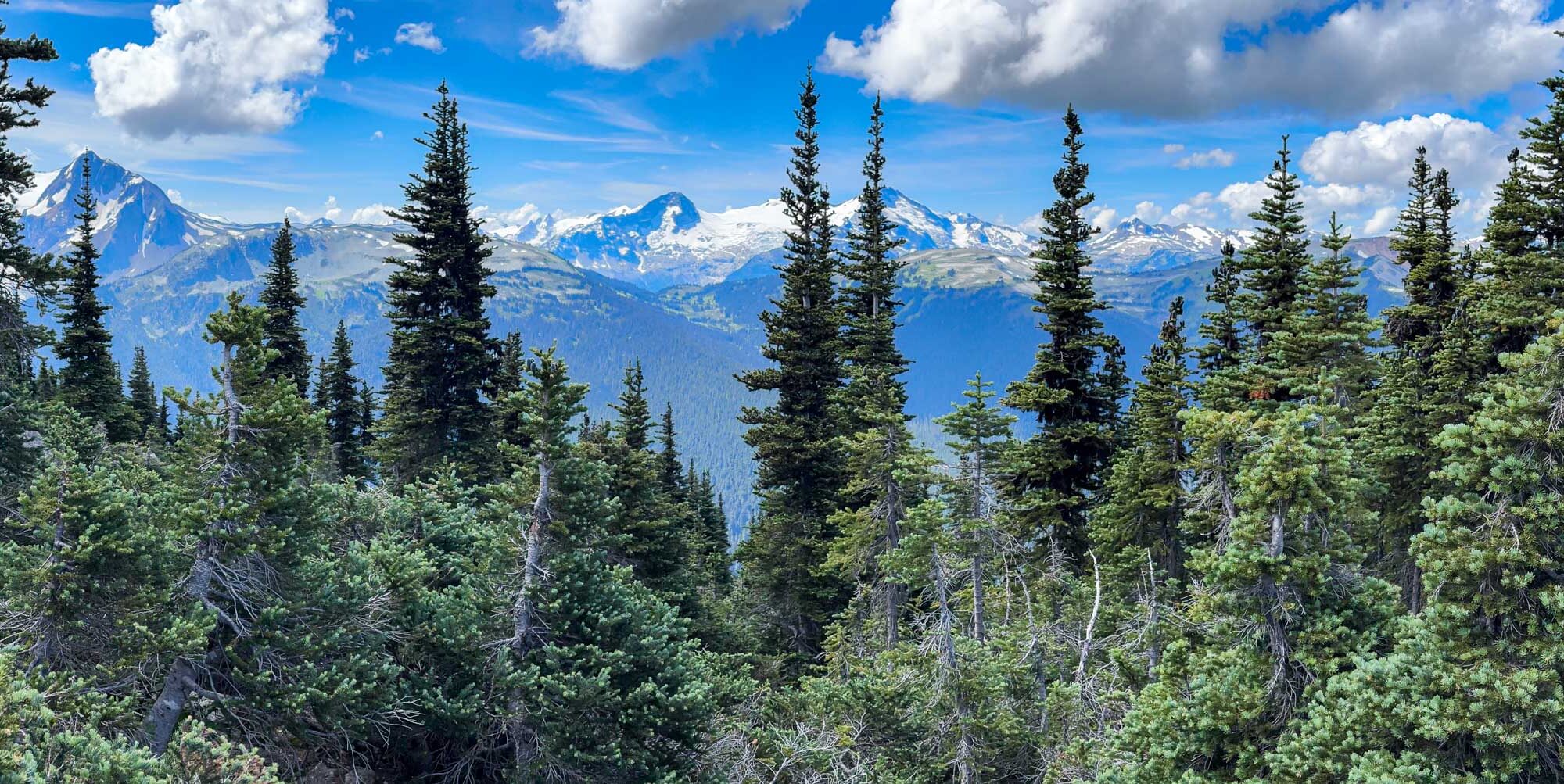

Michael, as you know, I happened to be in Whistler just before you. It was interesting to compare the appearance of the western red-cedar in these rank forests with its appearance in the narrow band of its southernmost range in Humboldt County.
Thanks for sharing that! It’s always fascinating to see how a species can wear such different “faces” across its range.
Gorgeous photos, Michael! I appreciate your description of life zones and the mix of conifers in them.